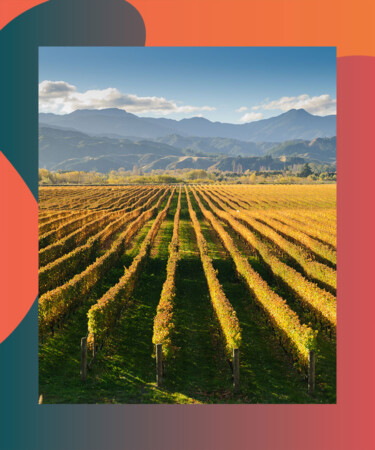After three years of challenging conditions generated by the pandemic, New Zealand’s wine production is back on track — and then some. The nation’s wine exports surged to record levels in the past 12 months, according to the New Zealand Winegrowers 2023 Annual Report. This year marked the largest-ever one-year growth for the country’s export sales, increasing 23 percent in value to $2.4 billion NZ. The sales value growth outpaced the volume, which increased by 19 percent this year, showing that customers are willing to pay the higher prices that New Zealand wines command.
The unprecedented growth was primarily driven by the open borders, which helped ease labor shortages that producers struggled with during the pandemic. Additionally, the increase in tourism brought more attention to the country’s wine industry and provided a boost to small wineries. The U.S.’s insatiable thirst for New Zealand Sauvignon Blanc also pushed the country’s sales to record breaking heights, jumping 25 percent in value to $870 million. New Zealand expects further growth in the U.S. in the year ahead, suggesting that it could become a billion dollar export market for the country.
Throughout the report, much of the growth is attributed to New Zealand’s darling wine, Sauvignon Blanc. This signature style is key to the country’s export success, so much so that Clive Jones, chairman of New Zealand Winegrowers admits. “Performance of other styles struggle to match this pace, but in export markets and at home, our range of highly distinctive wine styles is a critical contributor to our reputation as a producer of the first rank.”
Export sales are particularly important to New Zealand’s wine industry: almost 90 percent of all its sales occur outside of its home market. So even though the country only produces less than two percent of global wine supply, New Zealand is the sixth-largest exporter of wine by value.
And although this report brings hope and excitement to the New Zealand wine industry, the country is currently facing a different set of challenges from the impact of Cyclone Gabrielle, which hit the country’s North Island in February. The country’s overall harvest volume is down six percent this year due to this devastating storm, so even though demand is on the rise, the production might not be able to keep up. The small, coastal region of Gisborne was hit particularly hard, with production down 43 percent. The renowned Hawke’s Bay region was also affected, but to a lesser extent. Overall, an estimated 800 hectares of vineyards lost some level of their fruit production and an additional 300 hectares of vineyards experienced significant infrastructure damage.
New Zealand Winegrowers says in the report that combating climate change through promoting sustainable practices and responding to extreme weather events like Cycline Gabrielle will continue to be a major focus.
“As with other primary industries, climate change is one of the key major challenges facing our sector; it is now a reality that producers are facing on a daily basis and is impacting day-to-day decisions,” Jones says.
This story is a part of VP Pro, our free content platform and newsletter for the drinks industry, covering wine, beer, and liquor — and beyond. Sign up for VP Pro now!
